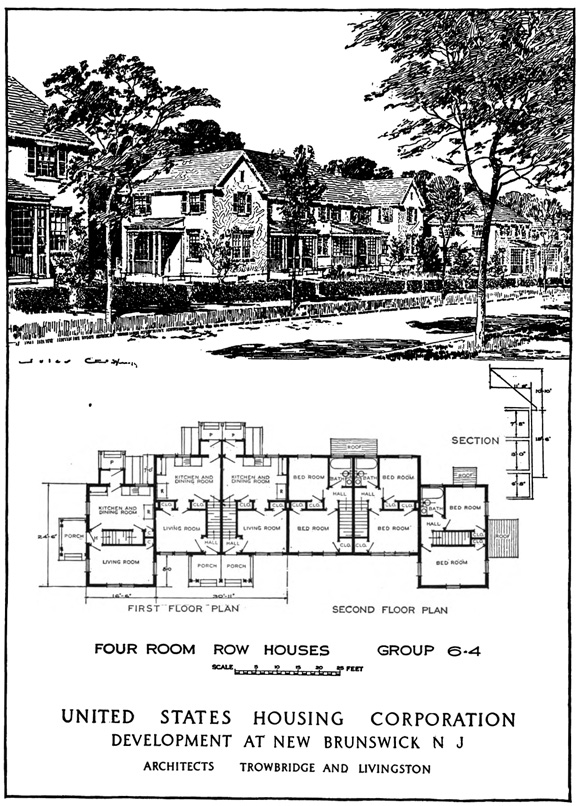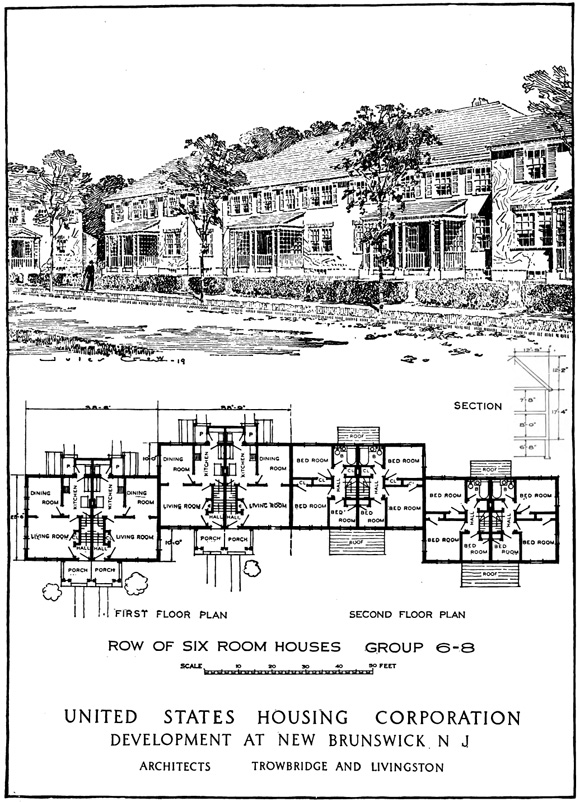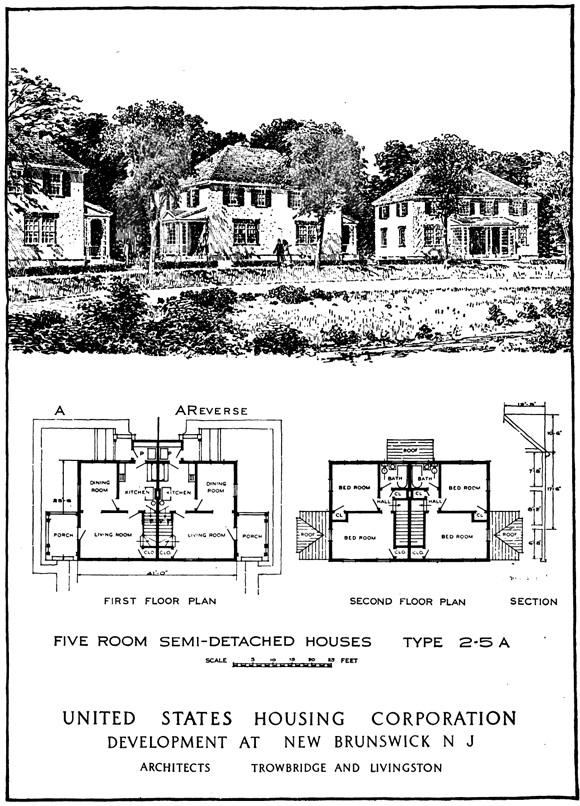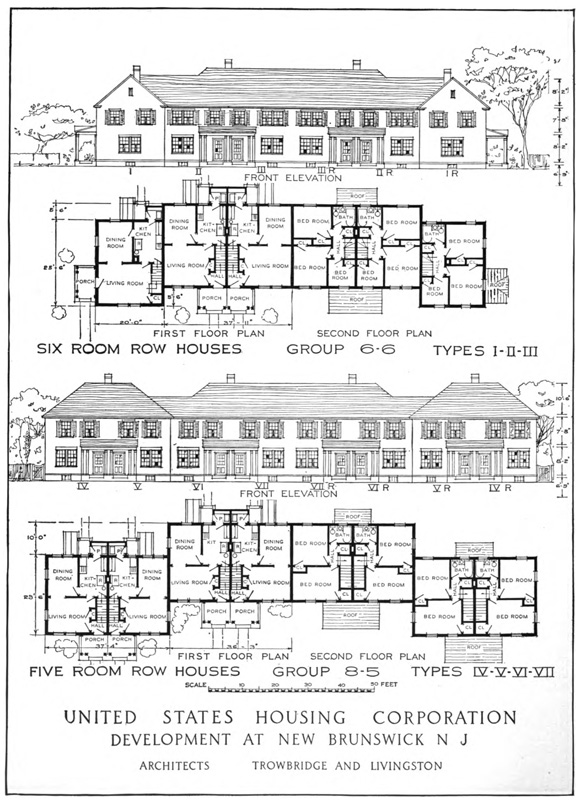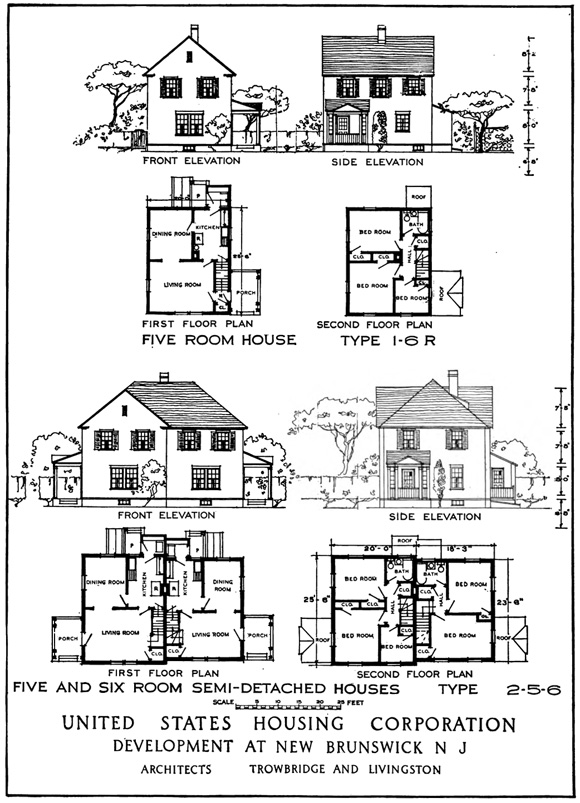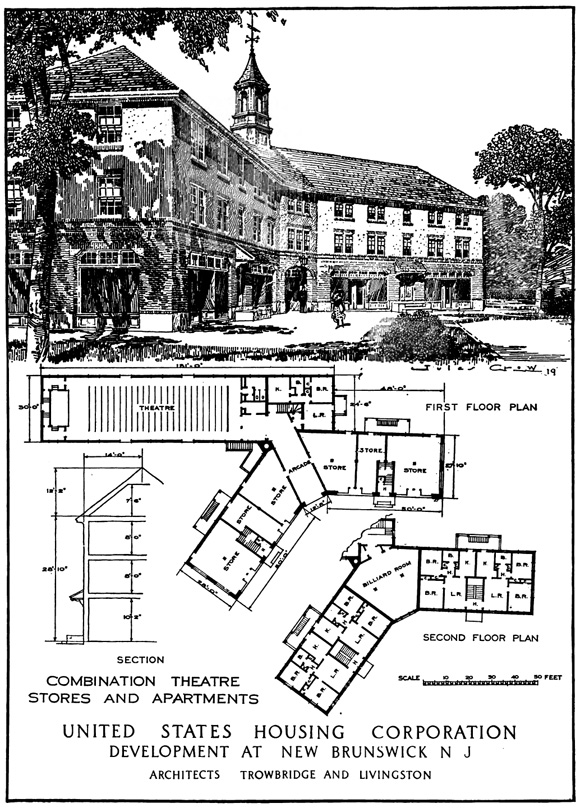New Brunswick, NJ
General Description (1919 report):
"The city of New Brunswick, a manufacturing community in eastern New Jersey on the south bank of the Raritan River at the head of navigation, had in 1918 a population of 40,000, double its population in 1910...The Wright-Martin Aircraft Corporation and other war industries most needing housing were in the southwest of the town along the main line of the Pennsylvania Railroad. The Wright-Martin plant was equipped in such a way that it could be readjusted, even at short notice, to the manufacture of sewing machines, cash registers, and similar products. Therefore, the greater part of their war force of 2,500 to 3,000 workers could be considered as permanent.
"As the regular trains between Trenton and New Brunswick arrived too late and left too early a special workmen's train was arranged for. A special rate of 30 cents per round trip was made to the workmen, the Housing Corporation absorbing the differential of 10 2/3 cents from the regular fare."
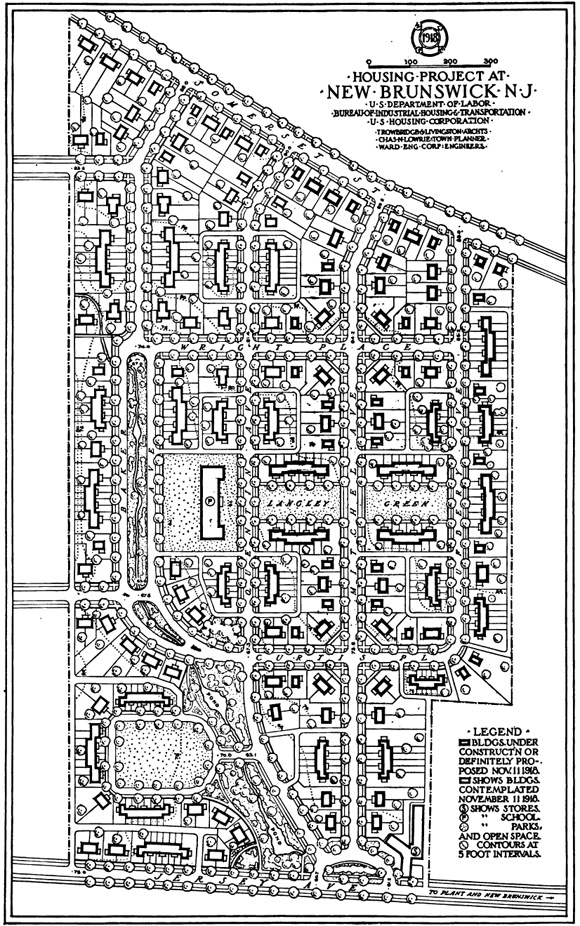
1919 excerpt describing the design of the New Brunswick Site:
Area planned: 42.99 acres. Housing planned: Detached houses, 41 families; semidetached houses, 150 families; row houses, 206 families; total, 397 families.
Housing constructed: Detached houses, 28 families; semidetached houses, 68 families; row houses, 96 families; total, 192 families.
"The island in front of the store group, surrounded by roadways, marks the entrance to the project. Following the creek is a long parkway bordered by the two roadways of Baker Avenue. Langley Green is on the northeast axis of the school-house, and a playground, hardly large enough taken by itself, is on its southwest axis. At the southwest corner of the project is another playground bordered by a roadway.
"This development is composed of semidetached houses and houses in groups, with a sprinkling of detached houses. The happy combination of the row houses in groups of four, five, and six room houses under long unbroken roofs gives the town layout the effect of large scale, of dignity without monotony, of variety without unrestfulness. The color effect, too, of the green roof slate used throughout, and the general uniformity in the tone of the stucco add to this pleasing effect. Though the stucco is uniform in tone, it varies slightly in color due to the difference aggregates used... The house designs individually are as excellent as is the whole scheme, all their details being good ecept where war necessity required the substitution of inferior material and coarse moldings. No better example of this type of development has been erected for the corporation."
The New Brunswick Site Today
Renderings, 1919
